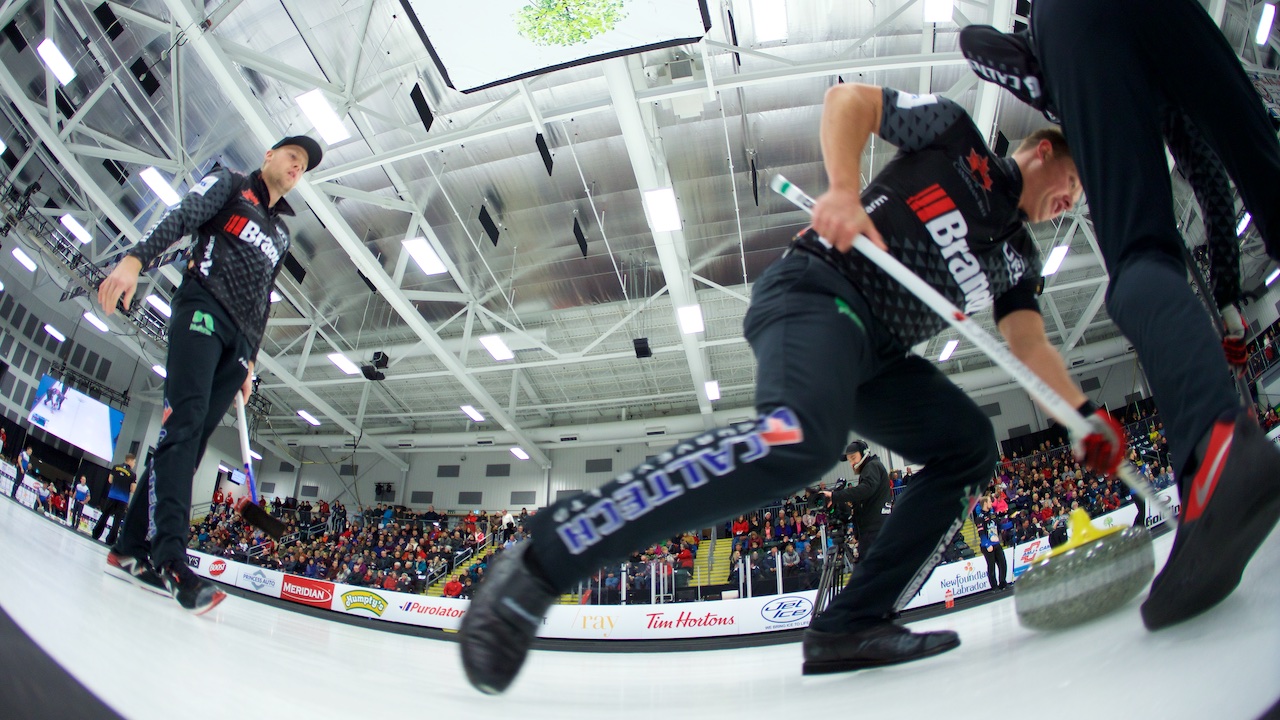Bracketology 101: Triple knockout explained
The Meridian Canadian Open is unique in the Pinty’s Grand Slam of Curling as it’s the only one of the six events in the series to feature triple knockout brackets instead of round-robin pools for preliminary play.
Triple knockout is a familiar format on the World Curling Tour — and was used throughout the Pinty’s Grand Slam of Curling when the series started in 2001-02 — although we don’t blame you if you’re unsure with how it works.
Just remember this simple rule: teams must win three games before they lose three in order to advance to the playoffs. Win three games to move on, lose three and you’re gone.
The 16 men’s and 16 women’s team divisions are split into two A brackets to start with each defeat dropping teams to a lower bracket until they reach three losses. Two A teams (3-0 records), three B teams (3-1 records) and three C teams (3-2 records) advance to the playoffs.
“It’s similar to a normal Slam when you think about it,” skip Laura Walker said. “You don’t know who you’re going to play ahead of time but you can’t lose three games. Usually, if you get two losses you still get something, so we’re just trying to keep the same mindset that we normally have and win more than we lose. If we can do that then we’ll find ourselves in the playoffs.”
Fun Fact: The Meridian Canadian Open reverted to a triple knockout format in 2014.
What makes triple knockout interesting is you could breeze through A-side and reach the playoffs in only three games (and earn a day of rest) or could end up grinding it out and play up to two more games through the C-side. The latter isn’t necessarily a bad thing as sometimes teams play better with their backs against the wall and keeps them focused in game mode plus it doesn’t hurt to learn more about the ice and the rocks in play.
Also, with the 16-team triple knockout teams always face off against another team with an identical record as themselves making every match an intriguing battle. As long as you’re still playing, you’re still in it. There are no games where a team has already been eliminated and is just playing for pride nor do teams have to worry about possible tiebreaker scenarios as winning alone will control their destiny.
“There’s no can we get in if so-and-so beats so-and-so, do you have the right draw-shot challenge, do you have the right blah, blah, blah,” skip Glenn Howard said. “You don’t have to worry about that. Just try and win three before you lose three, so that makes it a little bit simpler. I like the change-up.”
Since round-robin pools are balanced based on rankings, you don’t see two of the top teams face off until the playoffs. Here, they could meet in the A-qualifier match or, if they struggle to start, they could square off in the C-side with elimination on the line.
It may seem tricky since teams don’t always know who their opponent is going to be but as they say, to be the best you have to beat the best regardless and that’s why these teams are among the top in the world because they’re up for any challenge!
So then, which path has produced the most success since the format was reintroduced in 2014? Let’s break out the stats.
| Champions | Runners-up | Total | |
| A-qualifiers | 3 | 5 | 8 |
| B-qualifiers | 5 | 1 | 6 |
| C-qualifiers | 2 | 4 | 6 |
Although A-qualifiers have made the most finals, B-side has been the path that has set up teams for the most success. Between the two paths, if you’re only going to lose one game then at least get it out of the way early.
Since 2014, two A-qualifiers have met in a final only once: Team Gushue vs. Team Epping for the 2015 men’s championship. Skip John Epping threw a perfect 100 per cent defeating Brad Gushue 7-4.
Gushue and Team Homan have appeared in the most finals since 2014 at three apiece. Gushue won the men’s title in 2014 and 2017 with a runner-up result in 2015. Rachel Homan was a finalist to Team Muirhead at the inaugural Meridian Canadian Open women’s final in 2014 and captured the title in 2015 and 2019.

